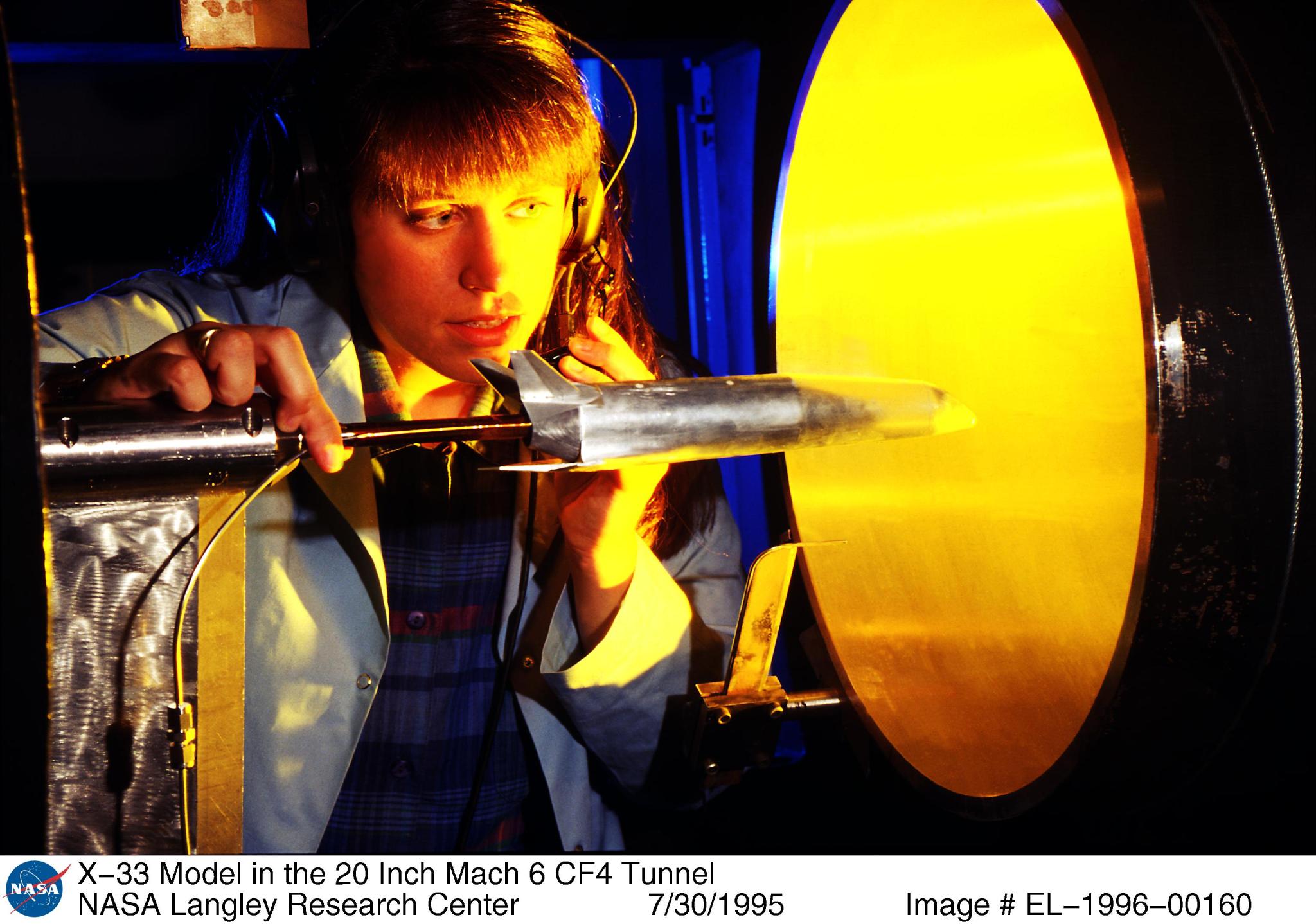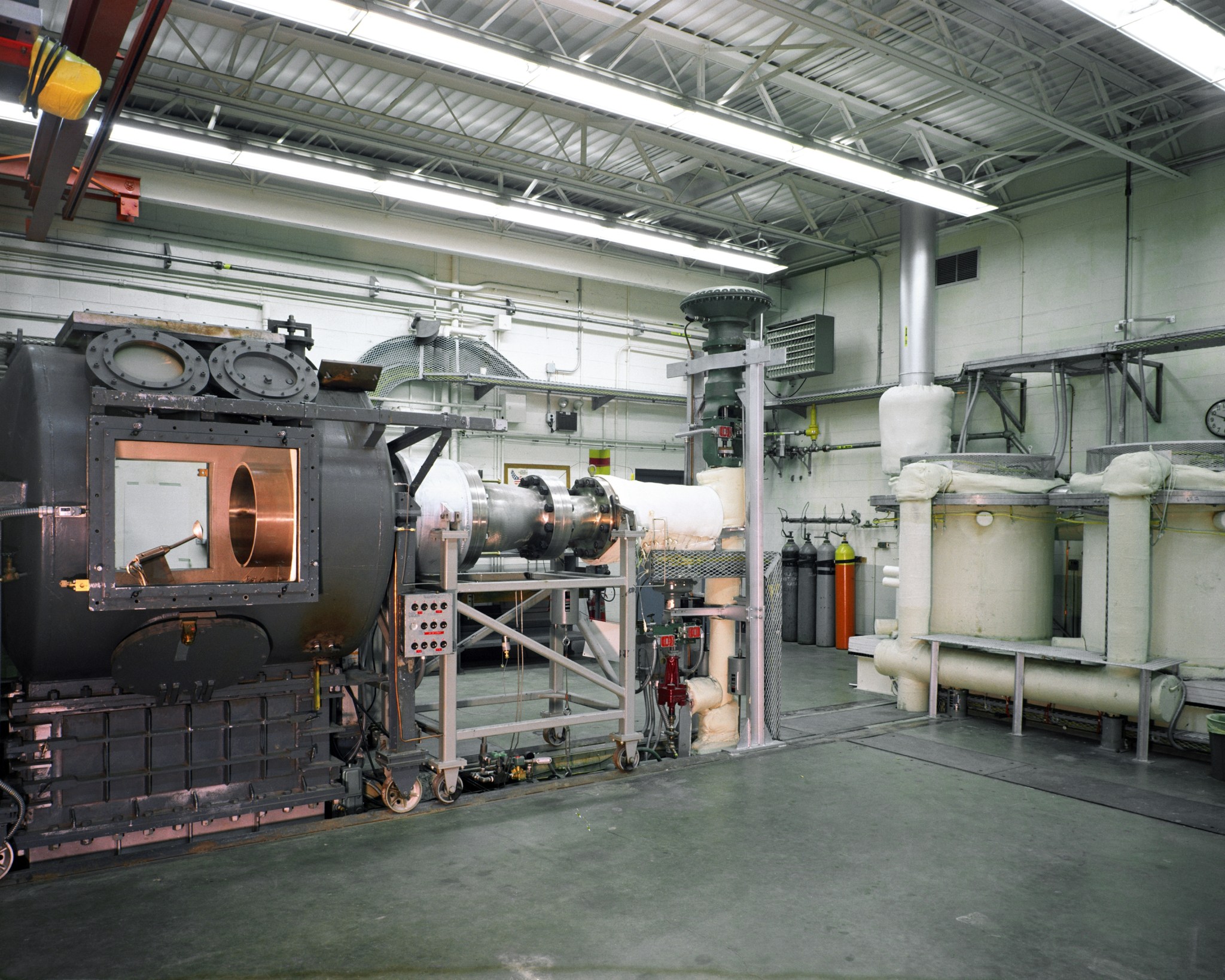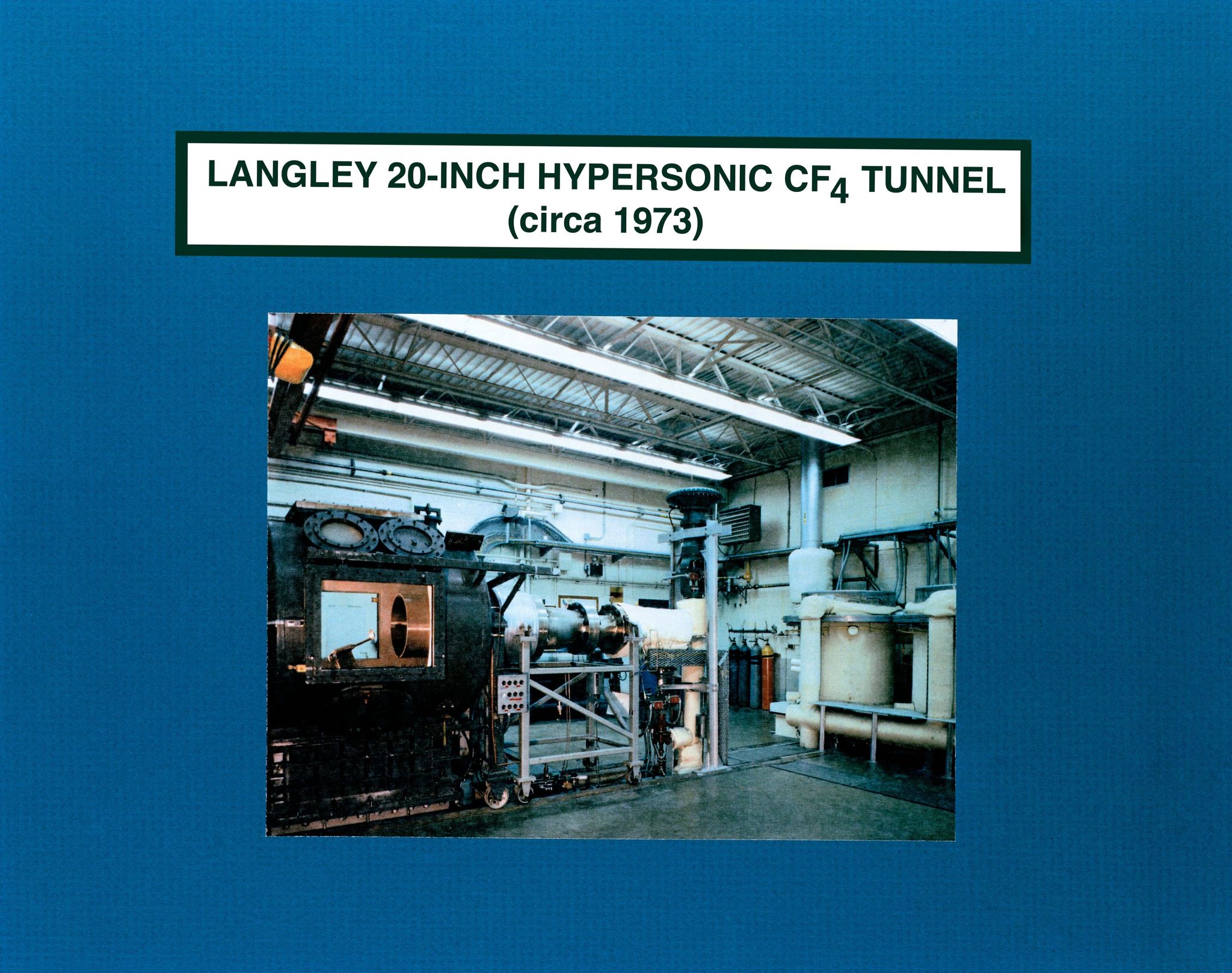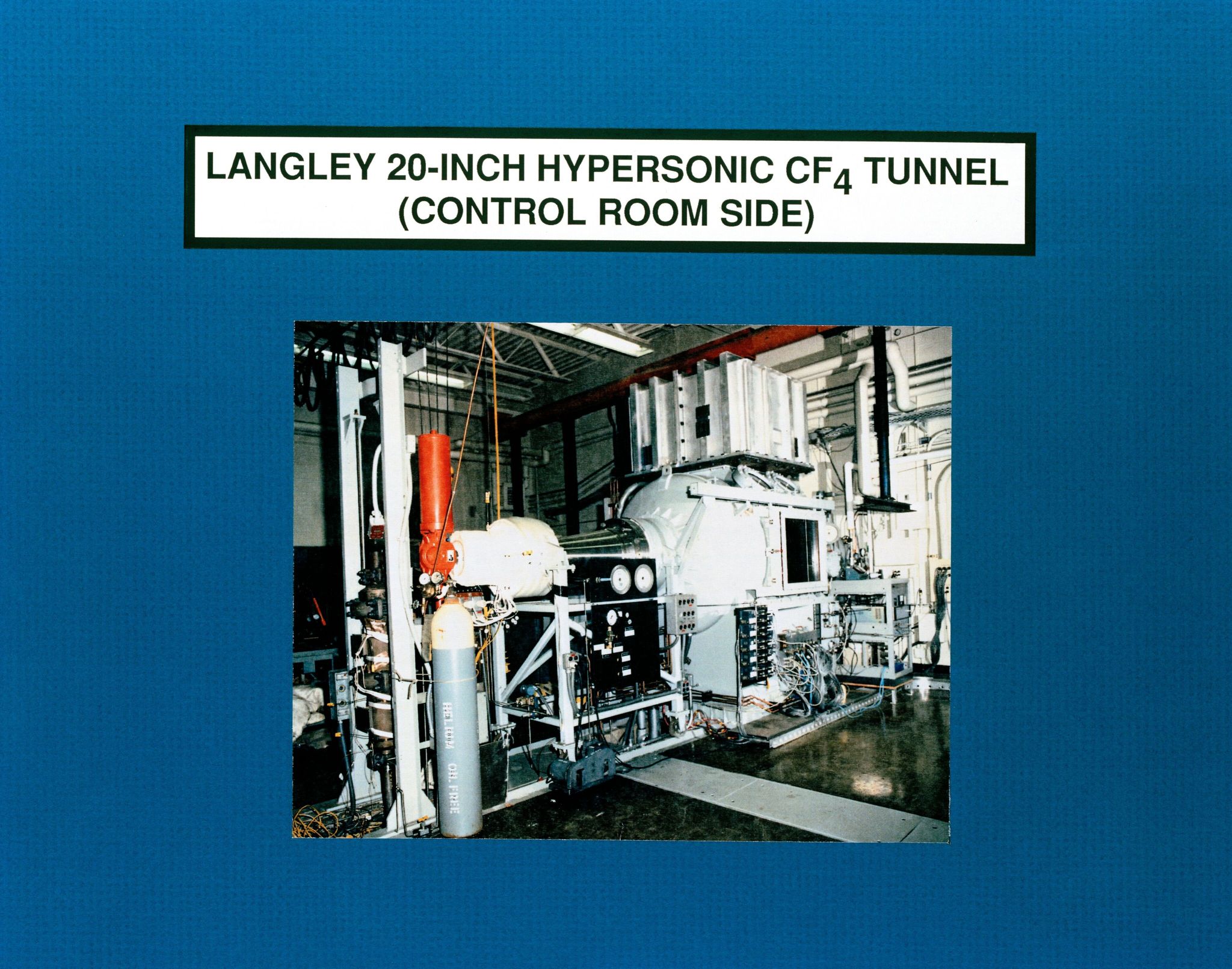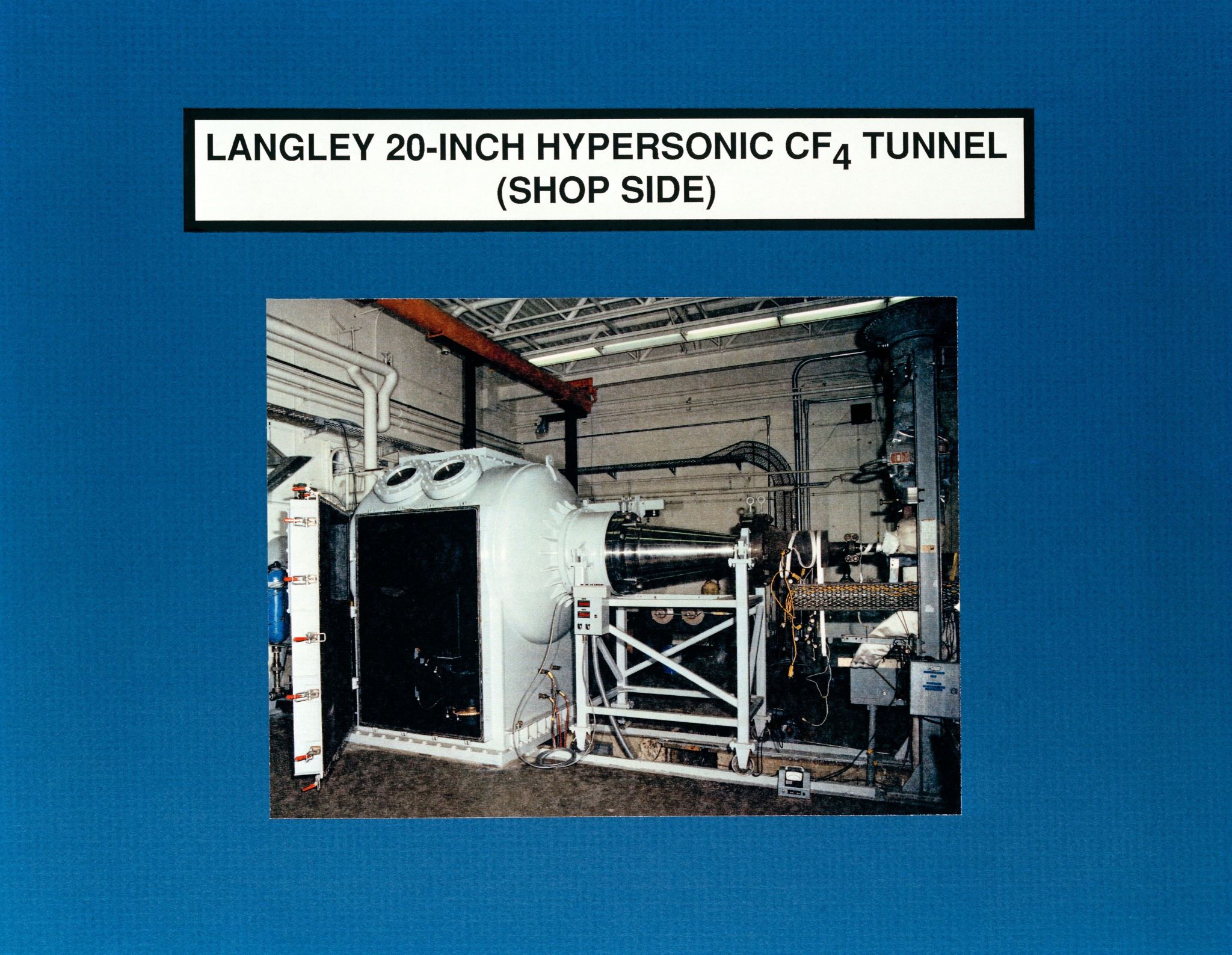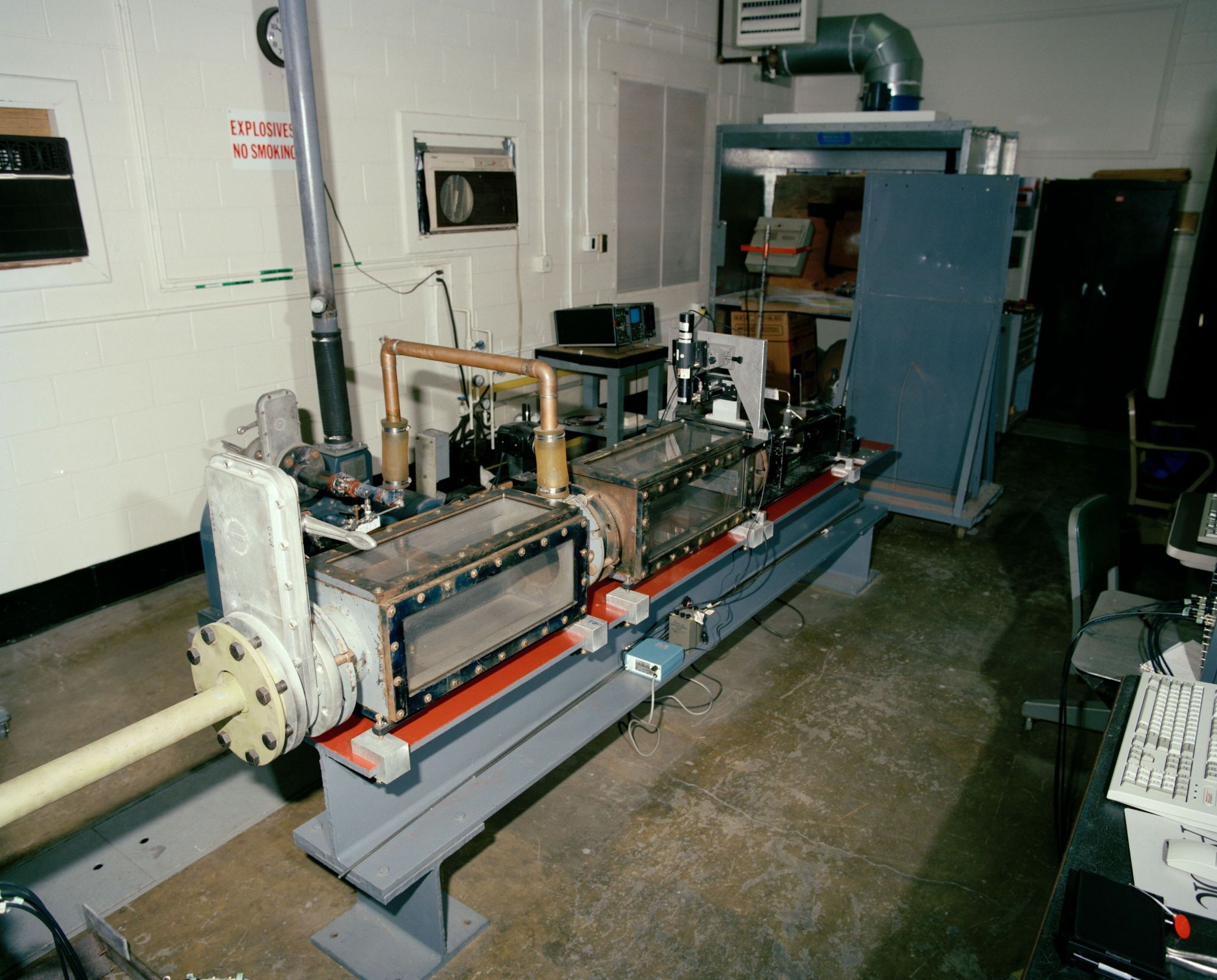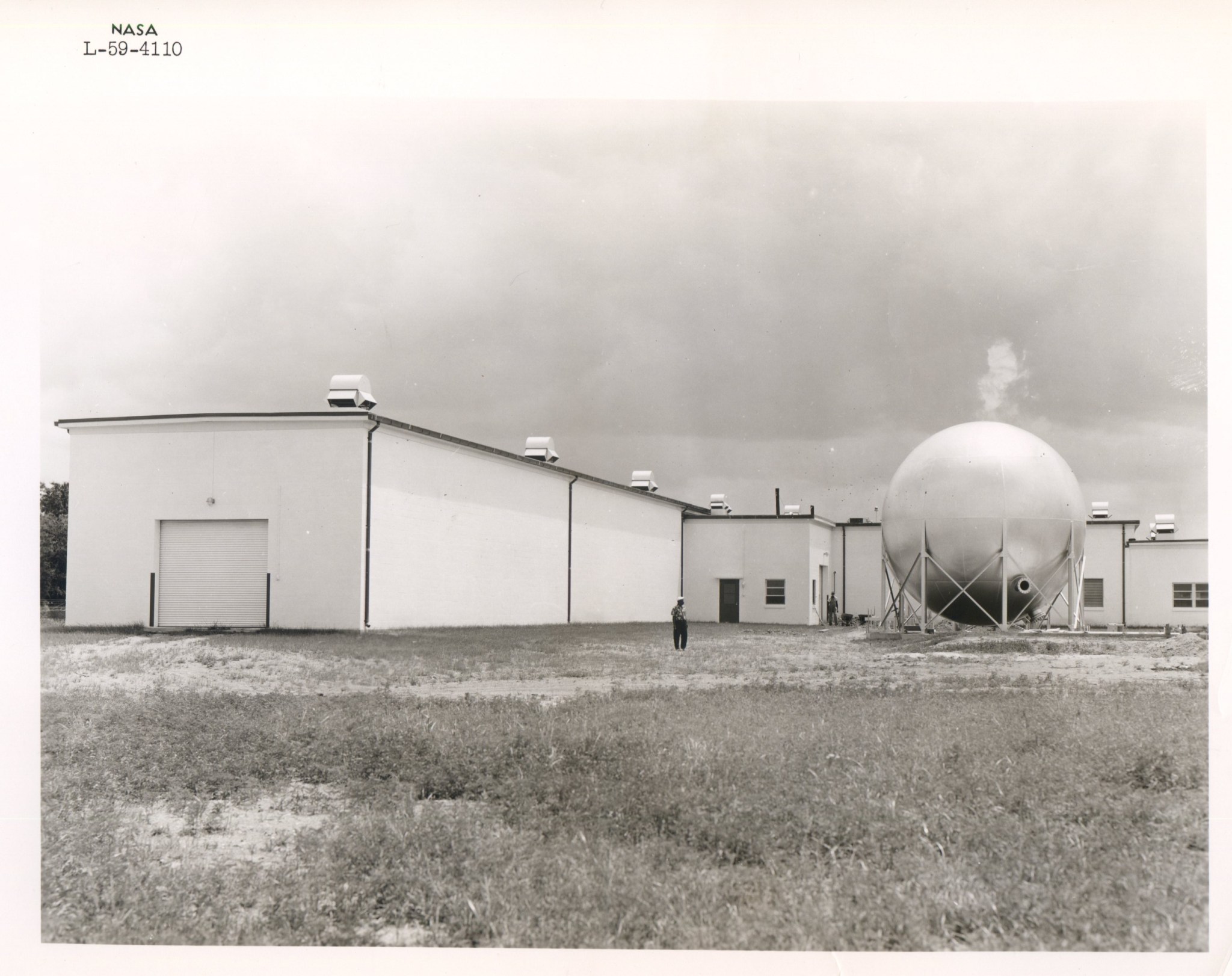Quick Facts
Year Built: 1960
Historic Eligibility: National Register Eligible
Important Tests: Gemini, Apollo, Space Shuttle Orbiter, meteoroid studies, crew rescue vehicles
History
Constructed in 1960, Building 1275, originally called the Hypersonics Physics Test Area, used tetrafluoromethane gas (CF4) heated to 1,000 degrees Fahrenheit (538 Celsius) to simulate the extreme heating conditions experienced by spacecraft when reentering Earth’s atmosphere.
Research here included reentry materials for spacecraft, tests of blunt-base models, evaluation of proposed X-33 and X-38 Crew Rescue Vehicles, and development and application of a unique holographic flow visualization technique for test analysis. Testing here also supported the investigation following the loss of Space Shuttle Columbia in 2003.
It went by several names over the years, including the Impact and Projectile Test Unit, the Entry Vehicle Flow Simulation Apparatus, the Hypersonic CF4 Tunnel, and the 20-Inch Mach 6 CF4 Tunnel.
As part of the Center’s revitalization initiative, NASA determined that the facility’s capabilities were no longer needed. It was demolished in 2017.
Impact and Projectile Range
At the time of construction, a gun facility was moved from the Impact Basin to the newly constructed Building 1275. The range is thought to have originally been constructed in 1958. The 1964 Facility Resume describes this part of the facility as consisting of a 190-foot by 30-foot range with three smaller adjoining rooms. Range 1 was 105-feet long, and ranges 2 and 3 were each 18-feet long. Projectile velocities were determined by photographing the projectiles at two stations and recording the time lapse.
By 1966, the range included a 20-millimeter light gas gun, a .22-caliber shock compressed light gas gun, a .22-caliber accelerated reservoir light gas gun, a .22-caliber rifle and a 20-millimeter powder gun. A lithium electro-thermal gun and a fourth range had been added by 1974.
In 1966, the Meteoroid Research Group proposed a gun with the capability of accelerating small projectiles to high velocities. Two stations in the gun would determine the projectile speed and size. The target was instrumented to provide time of impact and perforation. The investigation of meteoroid hazards was necessary for testing flight detectors and for impact damage studies. The gun allowed the testing of projectiles in the size range of greatest concern in designing flight experiments and in reducing spacecraft meteoroid damage. These tests were validated with the return of the Long Duration Exposure Facility (LDEF). The LDEF concept evolved from a spacecraft proposed by NASA Langley Research Center in 1970 to study the meteoroid environment.
Chemical Kinetic Shock Tube
The Chemical Kinetic Shock Tube at Building 1275 became operational in 1966 for high-temperature chemical kinetic studies of gas phase reactions. The stainless-steel tube with a 3.5-inch diameter was composed of a 19-foot test section, a 4-foot buffer section and 3-foot driver section. The tube could produce temperatures up to 4,000 degrees Kelvin and pressures up to 45 psi. Test conditions could be varied by the molecular weight of driver and buffer gases.
Arc Heated Materials Jet
In 1961, the Arc Heated Materials Jet became operational at Building 1275. This facility was used for the study of aerodynamic effects on materials at supersonic speeds and high temperatures.
20-Inch Hypersonic Arc-Heated Tunnel/CF4 Tunnel
The 20-Inch Hypersonic Arc-Heated Wind Tunnel (HAHT) was completed at Building 1275 in 1962. This tunnel allowed the testing of reentry materials. In 1972, the tunnel was converted to the 20-Inch Hypersonic CF4 Tunnel for the study of heat transfer, pressure distribution, and force tests of entry vehicles. The facility was a blowdown wind tunnel that utilized high-molecular-weight gases to produce normal shock density ratios comparable to those produced by high-speed entry vehicles, particularly blunt bodies.
The CF4 Tunnel was one of several hypersonic wind tunnels used to replicate the effects that space shuttles experienced during reentry. The CF4 Tunnel was constructed during the early development of computational fluid dynamics, a method using computers to simulate flight and was the only tunnel of its kind in the world. It was revolutionary because of its use of CF4 instead of air to simulate travel patterns of high-speed aircraft. CF4 is a chemical gas whose molecules have a specific size that allows the gas to mimic the scale of the aircraft.
The basic concept of operations was to release high-pressure, heated CF4 through a converging-diverging nozzle and a 20-inch test section into large, evacuated spheres. Gas was compressed to 5000 psig by a centrifugal pump and stored in a bottle field.
The test section area included the settling chamber, nozzle and piping, the 20-inch test section, diffuser and a heater. The settling chamber was 12-inches long and had a 7-inch inner diameter. Electric strip heaters were used to preheat piping, the settling chamber and nozzle to help maintain the gas temperature and reduce thermal stresses. The nozzle throat was 0.42 inches and expanded to 20-inches in diameter at the entrance of the test section. Mass flow through the test section was determined by the pressure and temperature of the gas. A heat exchanger, utilized as the cooling medium, reduced the gas temperature prior to entering the spheres. The system consisted of two spheres, three blowers and four pumps which were capable of reducing tunnel pressure down to 1/4 mm of mercury.
The Model Support and Injection System vertically injected a model into the test section at a predetermined time when the tunnel flow reached the desired pressure and temperature. The subsystem, installed in 1990, consisted of a hydraulically injected, horizontally translated frame. This replaced a pneumatically injected system in which the yaw was mechanically adjusted prior to each run and could not be changed during the run. The new system was also designed to dampen out and reduce model oscillations more quickly than the old system.
The CF4 wind tunnel was a major contributor to space shuttle research and was vital to the design of space shuttles. Initially, space shuttle models were tested in inexpensive facilities, such as the CF4 Tunnel and the Mach 6 Tunnel, to heat the models. Afterwards, the models were tested in more expensive facilities, such as the 8-Foot High-Temperature Tunnel, to experience temperatures closer to atmospheric temperatures. Eventually, the models were tested through full-scale flight. Designers used the CF4 Tunnel to test vehicles and search for potential danger scenarios before the vehicle’s first flight. These various tunnels allowed researchers to measure chemistry effects through experiments. A unique aspect of the CF4 tunnel was its ability to recreate high normal shock density ratio and low gamma ratio specific heats of real gas. The special nature of the CF4 test gas allowed the CF4 Tunnel to reveal the reason jets of the space shuttle were overworked during reentry.
The CF4 Tunnel was highly utilized in the Space Shuttle Columbia Accident Investigation Board’s final report. Shortly after the Feb. 1, 2003, accident, experimental testing in the CF4 Tunnel simulated a broad spectrum of thermal protection system damage to the orbiter’s windward surface. The CF4 Tunnel was able to recreate several of these complex failure scenarios, such as the damage on the leading edge of the left wing, to provide synergistic aerodynamic/aerothermodynamic wind tunnel measurements. The results of the experimental tests were used to refute hypothesized forms of thermal protection system damage. The CF4 Tunnel played a vital role in identifying boundary layer transition effects that contributed to the loss of the shuttle.
The CF4 Tunnel was also heavily involved in the space shuttle Return to Flight. During the Return to Flight, mission control found a protrusion in the space shuttle. Mission control needed to know what caused the protrusion and what would clear the shuttle vehicle for reentry. Tunnel operators were able to conduct subsequent testing in the CF4 Tunnel. While shuttles were in space, CF4 Tunnel researchers would remain at the mission control center while tunnel operators remained on standby in case any immediate testing was needed.
Because CF4 is heavier than air, the gas would often lie close to the lower places within the tunnel. When CF4 experiences moisture it becomes corrosive, which often damaged the pipes around the tunnel. Stainless steel also reacts with CF4 gas, so the CF4 tunnel switched to Inconel tubing, an alloy that is composed of iron, nickel and chromium. Inconel is often used in high temperature atmospheres because of its durability. The Inconel tubing significantly improved the quality of test gas and data. Although the CF4 Tunnel primarily used CF4, the tunnel had the capability to use any gas to simulate chemistry effects.
The CF4 Tunnel was an exceptionally dangerous machine to operate. Throughout its existence, many filters collapsed, including a lead filter that exploded. At the beginning of the CF4 Tunnel operation, lead bath heaters were used to heat the gas in order for hypersonic flight to be sustained in the test section. Lead helped the CF4 Tunnel hold heat at a constant temperature and it was also very inexpensive to use. When coils within the lead bath heaters leaked, it resulted in a large bubble of gas in the heater. Eventually, the bubble erupted, spreading lead all over the facility. Subsequent bath heaters used molten salt, which later switched to the use of molten tin.
Many other facilities used electrical resistance heaters, but they required a significant amount of time to reach required testing temperatures. Since the CF4 Tunnel’s test time was only around 24 seconds, the CF4 gas needed to heat quickly. To help the CF4 Tunnel maintain a constant temperature throughout test times, researchers attempted to install natural gas fire heaters, but the installation wasn’t successful. The furnaces cracked and caused the leakage of carbon monoxide into the facility. Consequently, the CF4 Tunnel was shut down.
The facility was demolished in 2017.
Examples of the kinds of research conducted in the CF4 Tunnel can be found on the NASA Technical Reports Server. Examples include:
- A magnetically rotated electric arc air heater employing a strong magnetic field and copper electrodes
- Shuttle Return To Flight Experimental Results: Protuberance Effects on Boundary Layer Transition
Related Materials
A 1974 resume of the Chemical Kinetic Shock Tube
A paper entitled, “Aeroballistic Range Facilities and their Peripheral Equipment”
1966 proposal from the Meteoroid Research Group to build a gun
1965 brief description of the Arc-Heated Materials Jet Building
1965 brief description of Langley’s 20-Inch Hypersonic Arc-Heated Tunnel (TM X-1130)
























